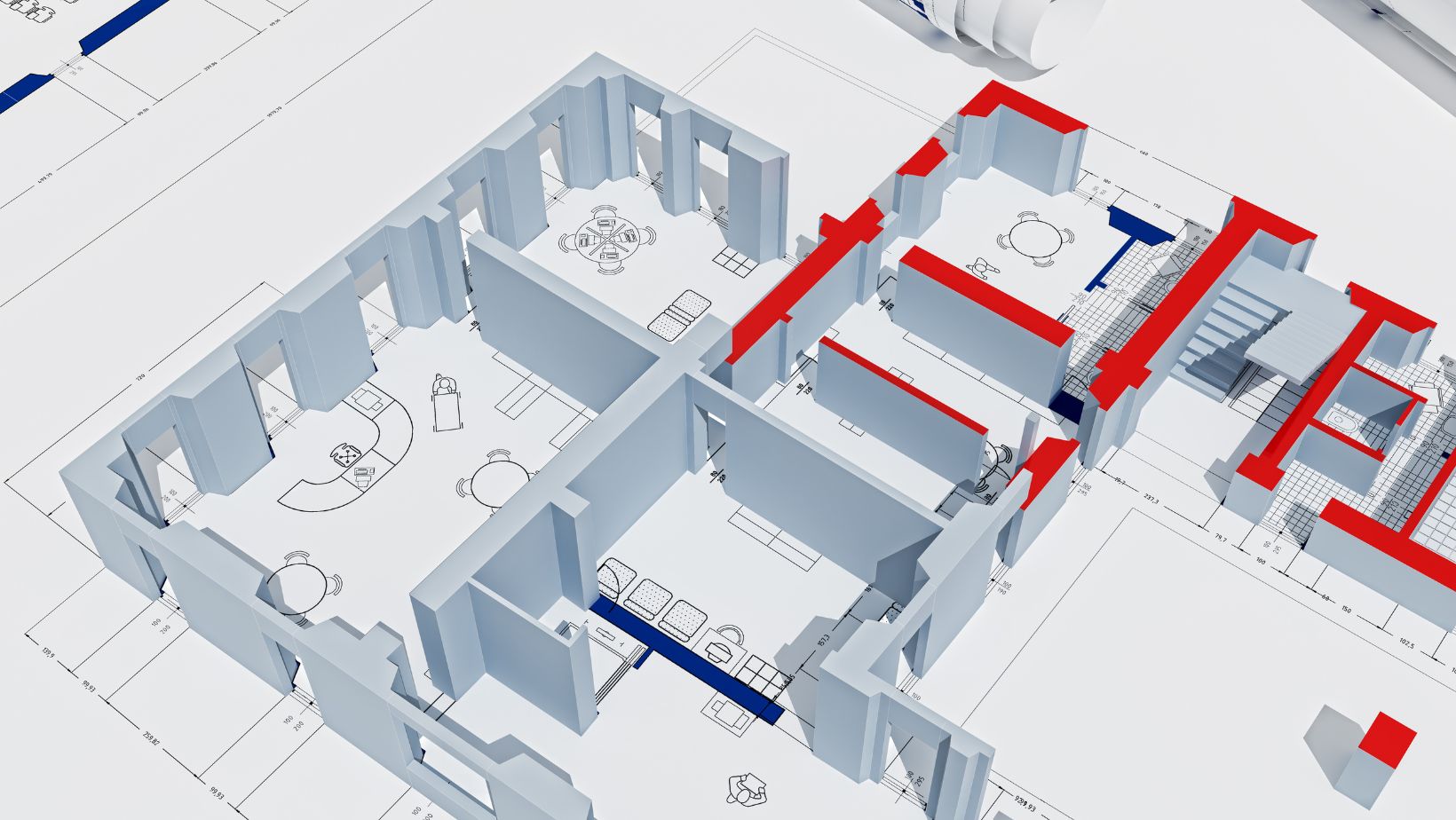Ever marveled at the intricate designs of skyscrapers or the detailed layout of your dream home? Behind every architectural masterpiece, there’s a 3D building drawing. These drawings aren’t just for architects, but for anyone with a curiosity about the world of design and construction.
3D Building Drawing

3D Building Drawing embodies a technique integral to the field of architecture. It’s the process of crafting a three-dimensional visual representation of a building. By depicting buildings in a 3-dimensional plane, architectural concepts assume a tangible form that extends far beyond the flat, two-dimensional realm of traditional blueprints.
This realistic representation leverages software tools to generate detailed renditions of buildings, delivering an immersive visualization experience. Both novices and professionals in design and construction utilize it for developing an understanding of an architectural project’s final appearance. This aspect underscores 3D Building Drawing’s transformational effect on the architecture industry, forging a direct link between ideas and their real-world manifestation.
3D Building Drawing Technologies

Crossing the realm from conceptual designs to solid reality, 3D Building Drawing Technologies enable architects to visualize their architectural creations in a tangible, interactive format. Comprising a number of advanced software tools, these technologies aid in creating, editing, and refining detailed 3D representations of buildings.
Architects use tools such as AutoCAD, SketchUp, and Revit for 3D modelling of their designs. These tools offer unique features to facilitate the design process, enabling professionals to simulate and evaluate their designs dynamically. For instance, AutoCAD shines in precision line work and geometric modelling, SketchUp simplifies 3D modeling with intuitive design mechanics, and Revit brings designs to life with Building Information Modeling (BIM) technology.
3D Building Drawing Technologies also encompass visualization software like Lumion and 3DS Max, letting architects enhance their models with textures, lighting, and environment details, evoking the strength and realism of the envisioned structure.
Defining a new era in construction and design, these technological tools open the door to limitless possibilities, helping designers orchestrate their creative masterpieces from inception to completion, flawlessly.
The Benefits of Using 3D Building Drawings
 Delving deeper into the world of 3D building drawing, numerous benefits arise, redefining the parameters of design and construction. Firstly, it offers Enhanced Visual Communication. Architects use this technique to breathe life into their models, showcasing accurate views from every angle, driving better client engagement. More visually engaging media, such as virtual walkthroughs or before-after views, often get created, facilitating better project understanding.
Delving deeper into the world of 3D building drawing, numerous benefits arise, redefining the parameters of design and construction. Firstly, it offers Enhanced Visual Communication. Architects use this technique to breathe life into their models, showcasing accurate views from every angle, driving better client engagement. More visually engaging media, such as virtual walkthroughs or before-after views, often get created, facilitating better project understanding.
Secondly, it fosters Improved Accuracy and Less Error. Fine details of a structure, including the spatial arrangement and material specifications, are perfectly captured, allowing for a smoother process, minimizing possibilities for misinterpretations or errors in the actual construction phase.
Lastly, it enables Efficient Design Modifications. Thanks to software like AutoCAD or SketchUp, making alterations becomes a frictionless process, increasing efficiency, saving time and resources. By using 3D building drawing, architects, planners, and even owners gain finer control over the design process, streamlining project execution. The overarching advantage? Reduced project timelines and improved quality of construction.
Practical Uses of 3D Building Drawings
3D Building Drawings find extensive use across various industries and applications. Property developers, for instance, leverage these drawings to gain a robust understanding of the property’s final appearance, thereby assisting in strategic planning and marketing. In real estate, these drawings are particularly advantageous as they allow potential buyers to visualize the property, helping accelerate decision-making processes.
Interior designers employ 3D building drawing to create detailed representations of interior spaces. This practice aids in assessing the aesthetics and functionality to ensure the client’s requirements are adequately met. Builders, too, utilize these drawings to pinpoint potential structural issues before construction, fostering a precise and efficient building process.
Furthermore, local authorities use 3D building drawings for urban planning, making informed decisions about city development thanks to the comprehensive perspective these drawings provide. Therefore, whether it’s real estate, interior designing, construction, or urban planning, 3D building drawings prove indispensable in several practical scenarios.

